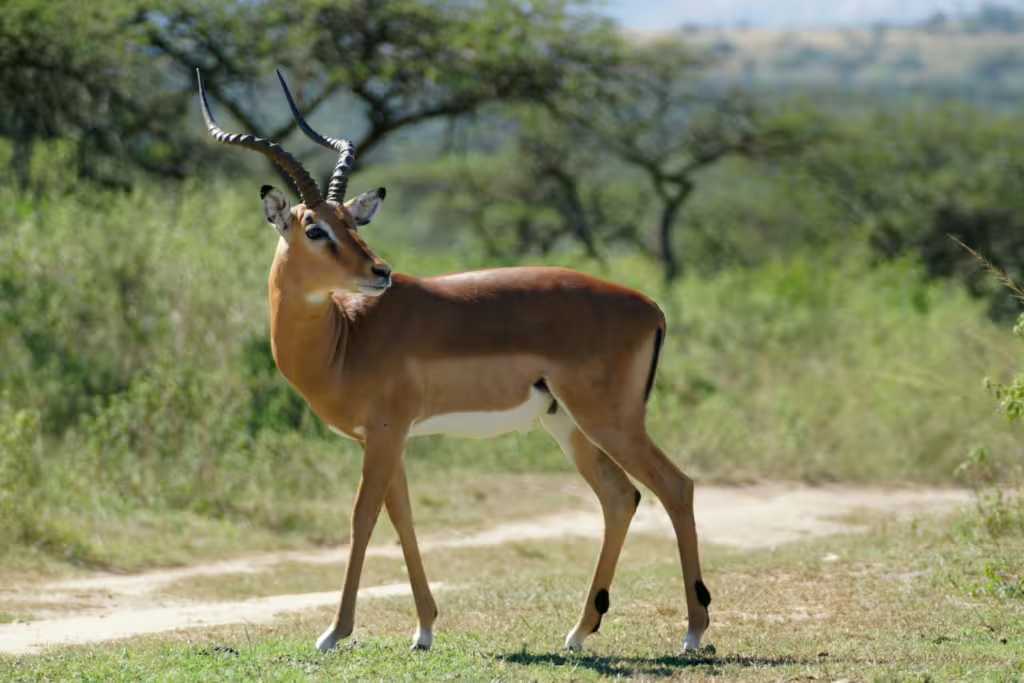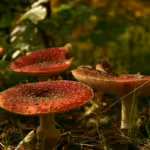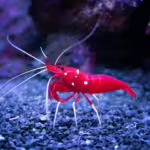When it comes to the many incredible exotic animals that fill our collective imagination, be they elephants and rhinos or lions and ostriches, it’s easy to overlook the more unassuming ones. Antelopes tend to fall into this latter category. Amazing as they are, these swift and graceful inhabitants of the world’s savannas, grasslands, and deserts, are often overshadowed by the “big names” of the animal kingdom.
This is sad for several reasons, first among them being that these ubiquitous ungulates play an indispensable role in maintaining the balance of their ecosystems. The second reason is because these animals are some of the most unique and specialized herbivores on the planet. Antelope fit a fairly common morphology; they have slender, quadrupedal bodies and powerful legs. They are possessed of sharp hearing and reflexes and almost all of them have horns of some type. This is where the similarities between species end, however; as nearly every antelope species is possessed of its own singular evolutionary traits.
These animals have evolved to live in some of the most challenging environments on Earth and they have done so in ways that make them unique among the other herd animals that share their habitats with them. Those habitats, incidentally, are quite widespread, as antelopes have settled in ecosystems all across Africa, Asia, in Europe, and even in North America.
Sadly, despite their many adaptations, more than a few species of antelope facing down the threat of extinction. A lethal combination of habitat loss, poaching, and climate change are pushing these animals to the brink. All this means is that it is becoming increasingly more important to understand the antelope’s environmental significance, which is why we have written this piece in the first place.
In this article, we will discuss the dangers antelope species across the world are currently facing and how we might work to conserve them. At the same time, we will explore the unique adaptations of the various species and examine how antelopes contribute to their environment, as well as why that is so crucial to the continued survival of so many vital ecosystems.
The Ecological Importance of Antelope
Antelope are more than just beautiful animals—they are vital contributors to the continued health of their ecosystems. As herbivores, antelope do much to influence the structure and composition of plant communities around them. This is because most antelope serve as both grazers and seed dispersers in their habitats. The feeding habits of these often multitudinous lifeforms shape the vegetation in grasslands and savannas and effectively prevent the dominance of any single plant species. This a way that antelope and their close relatives, deer, horses, bovine, and goats promote biodiversity that will ultimately benefit other species of plants and animals living nearby.
In Africa, where there are more than few distinct species of antelope, these creatures prevent overgrowth; though it often depends entirely on the specific plants that specific species eat. The impala and the springbok for example, mostly feed on grasses and small shrubs, thus preventing these plants from becoming overgrown. This, in turn, allows other species to thrive. In this case, those species includes a variety of plants attracts different insects, birds, and some small mammals. Without those antelope grazing on these plants specifically, the entire ecosystem would become less diverse. Moreover, this could potentially lead to an overgrowth of certain species, which would then greatly disrupt the homeostatic balance of the environment.
As we mentioned earlier, antelope also play a key role in seed dispersal. As they move through the landscape, some species of antelope consume various fruits and seeds, which then pass through their digestive systems and are deposited in different areas along with their…leavings. This process enables plant species to become more widespread, which contributes to the regeneration of plant communities. By facilitating this process, antelope indirectly aid in the survival and growth of many native plant species, including trees, shrubs, and grasses.
As prey animals, antelope are an essential part of the larger food chain. These creatures serve as food for a wide range of predators, from big cats like lions and cheetahs, to hyenas, crocodiles, wild dogs, and even birds of prey. By supporting these myriad predator populations, antelope help maintain the vital predator-prey dynamics of wild ecosystems, which serve as a fundamental piece of ecosystem stability. Indeed, the very presence of a healthy antelope population ensures that the local carnivores can thrive, which in turn regulates herbivore populations and maintains the balance between plant and animal life. As Mufasa once said, “…thus we are all a part of the great Circle of Life.”
The Endangered Status of Antelope
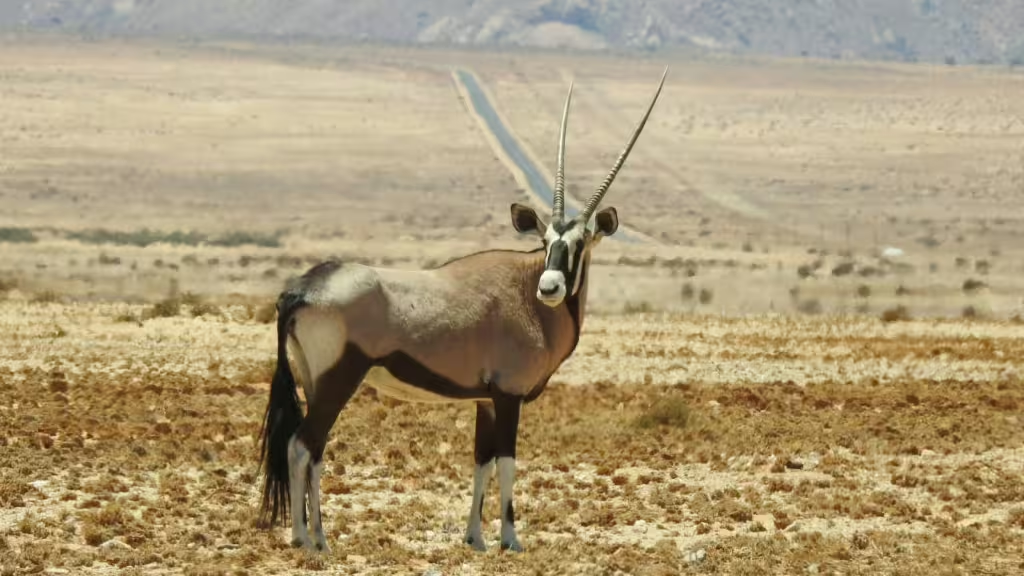
Despite their critical role in maintaining the health of countless ecosystems around the world, more than a few antelope populations around the world are facing significant threats thanks to human activities. Habitat loss is being caused by the constant proliferation of human agriculture, urbanization, and infrastructural development, and this is one of the biggest factors contributing to the decline of many antelope species. Our population has continued to grow with every passing decade and as human settlements expand and forests and grasslands are cleared away to make room for more farmland, the antelope’s natural habitats become ever smaller. Their lands shrink or wither and the antelope are left with fewer areas to roam, graze, find shelter, or even find other members of their species.
Many species of antelope are threatened because of poaching. People hunt these beautiful creatures for their meat, horns, and skins. Even today, trophy hunters seek out antelope so they can collect their horns. Still more people hunt them so that they can use their horns in traditional medicine. Whatever the justification, the illegal wildlife trade has had a particularly devastating impact on vulnerable species, such as the kudu and the bongo. Like so many species that have already been lost to time, these two unique species are inching ever closer to extinction.
Climate change is equally concerning for animals that live in some of the hottest places on the planet. As temperatures continue to rise and rainfall patterns change like the direction of the wind, the reliable habitats that antelope once called home are being altered in ways that they cannot cope with. Climate change has already seen an increase in the frequency and severity of droughts in certain areas. This not only vastly affects the availability of water and food for many animals, it can also result in warmer, drier conditions, which increases the risk of more destructive brush and forest fires. Similarly, shifting weather patterns have already caused losses of suitable grazing land for these animals, forcing them to have to migrate in search of resources. The result, in these cases, could wind up being an overcrowding and increased competition for food.
The International Union for Conservation of Nature (IUCN) has already classified several antelope species as endangered or critically endangered over the years. According to their IUCN Red List, some of the most threatened of these include the addax antelope, the scimitar-horned oryx, and the saiga antelope; to name a few. These rare and singular species have been categorized as such due to a number of factors, but as always, the chief among them has only six letters; humans. These declining antelope populations might not seem important to some, but the are a real cause for concern. The extinction of any one of these would have ripple effects throughout their ecosystems, disrupting the balance of many different plant and animal communities.
Unique Antelope Species: Adaptations and Behaviors
The world of antelope has as many different types of horns as it has species. With over 90 species spread across various continents, it is safe to say that the antelope family is a diverse lot. Each of these many species has evolved its own unique adaptations that allow them to survive in their specific habitats. Though the most obvious of these adaptations tend to be differing physical characteristics, these different species also possess unique behaviors. Whatever the case, these adaptations are designed to help the antelope evade predators, conserve energy, and thrive in their specific environments.
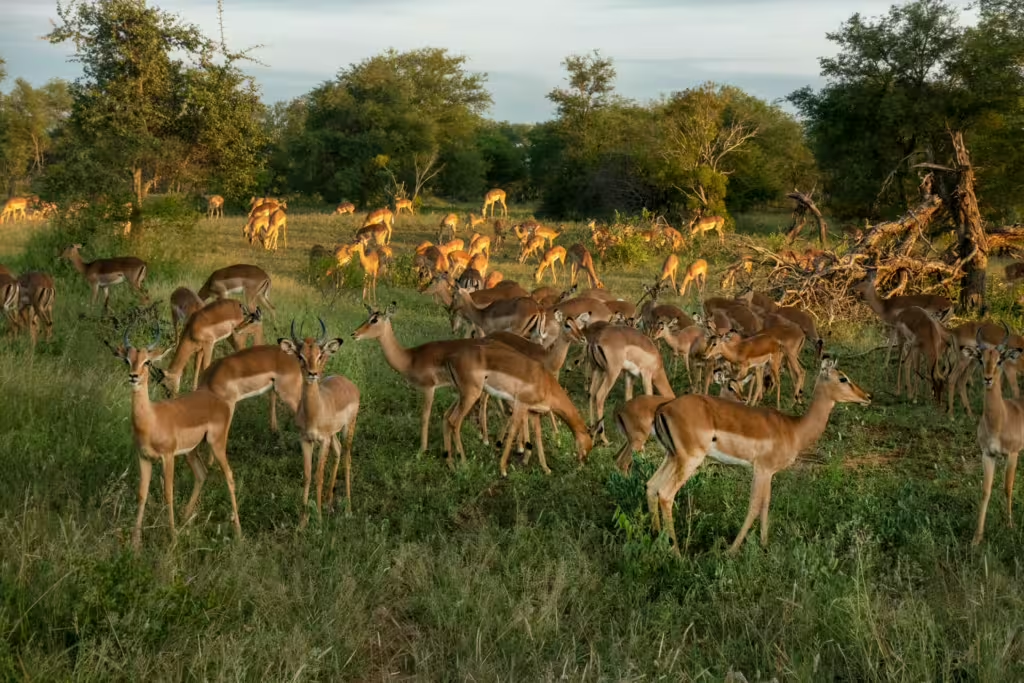
Addax Antelope (Addax nasomaculatus): Found in the Sahara Desert, the addax antelope is one of the most iconic desert-dwelling species known to man. This animal is most recognizable for its white coat and twisted horns. The addax has evolved to survive extreme heat and scarce water resources, which is evidenced by its uncanny ability to go without drinking water for long periods of time. This crucial adaptation has enabled it to thrive in the most arid of environments. In addition, the addax also happens to be nocturnal, foraging at night when temperatures are cooler and resting during the hottest parts of the day. Sadly, this species is critically endangered due to habitat destruction and overhunting.
Saiga Antelope (Saiga tatarica): The unusual-looking saiga antelope is known for its distinctive, bulbous nose. This protuberant nose is not just for show, however, it serves as a way for the animal to filter dust and regulate temperature as it traverses the arid steppes of Central Asia. This adaptation is especially important because of the sometimes harsh conditions and frequent dust storms of the region. Unfortunately, the saiga population has been severely affected because of people hunting them to excess for their horns. This is compounded by several disease outbreaks that have thinned its ranks, resulting in its current critically endangered status
Kudu (Tragelaphus spp.): The greater kudu is one of the largest antelopes in all of Africa. It is known for its striking spiral-shaped horns and graceful, camouflaged appearance and it can be found ambling about in wooded savannas and forest edges. Kudus have an excellent ability to navigate dense vegetation, which also helps it to remain hidden from predators. Kudus are also excellent jumpers, capable of leaping over fences and obstacles to evade danger. Fortunately, this particular species is not currently at risk of extinction, though some species of kudu, such as the lesser kudu, are considered vulnerable due to habitat loss and hunting.
Bongo (Tragelaphus eurycerus): The bongo is one of this writer’s favorite animals. Like the mysterious okapi, this large, forest-dwelling antelope has beautiful striped fur. The orange and white stripes on its body and large, sweeping horns make it quite a sight to behold, though you might never actually see one in the wild; at least not if you went looking during the day. These antelopes are primarily nocturnal creatures, that use the cover of darkness to avoid predators. They also happen to be incredibly agile, able to navigate through dense forest with ease. Unfortunately, like okapis and several antelopes above, this antelope’s population is in decline. Thanks to deforestation and poaching it is now considered to be endangered.
Conservation Efforts to Protect Antelope
We aren’t going to sugar coat it….there are many significant threats to antelope populations around the world. All hope is not lost, though, as there are also numerous conservation efforts currently underway to protect these animals and their habitats. There are hundreds of wildlife reserves, national parks, and protected areas out there that provide safe havens for antelope species; not to mention zoos and animal parks. These areas allow antelope to roam freely without the constant threat of human encroachment, poaching, or habitat destruction.
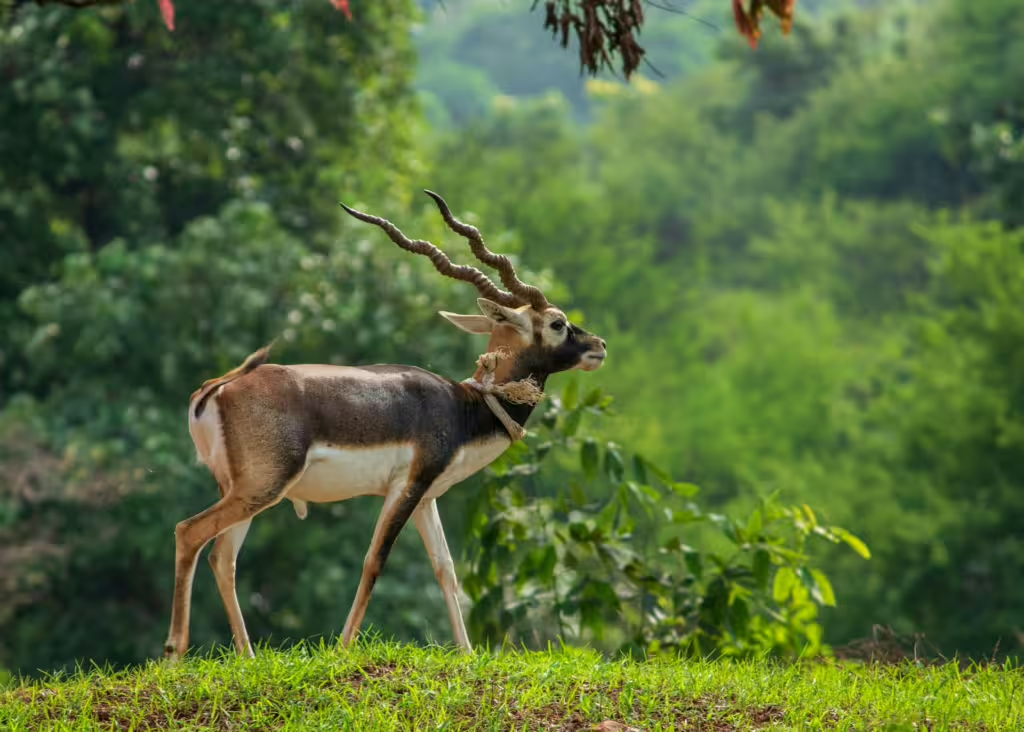
Many zoos and nature preserves have captive breeding programs in place that have become essential for the continued survival of many critically endangered antelope species. These places have been working hard for many decades now, to successfully breed back the dwindling populations of animals such as the addax and the scimitar-horned oryx. The hope is that through these captive breeding initiatives, the resultant progeny will be able to be reintroduced into the wild, bolstering the population and maintaining genetic diversity for all members of that species.
True Investigator Says…
As you can see, the many antelope species that call this world their hime are not to be overlooked. These amazing grazers are among the most beautiful and ecologically significant creatures on the entire planet, contributing to the health and stability of their ecosystems in ways that most people don’t fully comprehend. Antelope are herbivores, seed dispersers, and prey species, and these three critical roles are vital to the survival of any and all ecosystems. Despite the threats they face due to habitat loss, poaching, and climate change, it seems that human beings are finally seeing the big picture. We must continue to steward their conservation, and we can do this by protecting their habitats, supporting captive breeding programs, combating poaching, and spreading the word about the absolute wonder of antelopes!
Discover more from TrueInvestigator
Subscribe to get the latest posts sent to your email.
